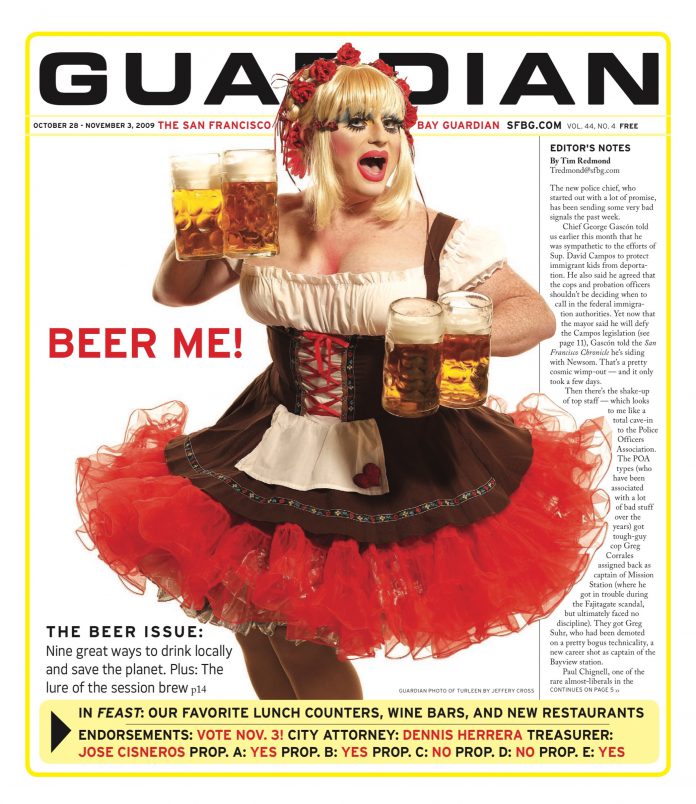California my way: Pacifica in all her roaring glory; "Bluebird"; Gene Clark suffering for his art at the Troubadour; Arthur Lee perched atop Laurel Canyon as dark magus of the Sunset Strip; "Free Huey!"; George Hunter and the Charlatans giving birth to the ’60s in Frisco and Virginia City; redbones holding it down at Alcatraz; Barry White’s boudoir epics vs. War’s low rider country-funk; r.i.p. Nudie Cohn; surf-and-skate as spiritual practice and Third World coalition builder at street level; "We’ll Get By"; Mary Ellen Pleasants; Sly Stone’s pop hoodoo; "¡Viva Cesar Chavez!"; the Watts Towers as organic temple and pan-African signifier; Iron Eyes Cody; the impenetrable alien secrets of Joshua Tree; Citizen Kane; Country Joe McDonald in a helmet ripping "Section 43" at Monterey; Jack London’s and Charles Manson’s erudite racism; rebellions yielding the "black Woodstock," Wattstax; Skid Row tacos; alas, poor Ishi; is Mount Shasta really an Atlantean portal?; "Snakes on Everything"; RTX; a great big wave looming to wash away Neil Young and his spindly wood home from Topanga Canyon; Chet Helms, my hero; really tall red trees — and the glossy harmonies of the Mamas & the Papas, much beloved favorites of my mother before she left upon her starship. Their masterpiece "California Dreamin’" was on my mind as Indian summer gave way to autumn and the 40th anniversaries of polarized cosmic events such as the man on the moon, Woodstock, the Manson murders, the late Michael Jackson’s pop debut unfolded apace.
Harvey Kubernik, a keenly clued-in and cosmically sensitive Pisces born in Hollywood, just dropped this season’s key entry chronicling that era and its ever-lingering aftereffects: the fine Laurel Canyon study Canyon of Dreams (Sterling, 384 pages, $29.95). Much of what made California north and south such a prime destination to escape the limits and cruel lacunae of Manifest Destiny in the 1960s went down in the postwar boomtowns of San Francisco and Los Angeles and their ex-urban satellites. Kubernik focuses on the tall tales of L.A . He reveals how the creativity, social experimentation, and mystery yearning of the denizens of canyons on L.A.’s west side changed America as it was teleported on the airwaves and on the backs of freaky-deak human hosts. The elite and cult acts that largely power Kubernik’s fables — Gene Clark; Arthurly; Gram Parsons; Lowell George; John and Michelle Phillips; the magicians of Crosby, Stills, Nash and Young — have left towering sonic, sartorial, and spiritual legacies. Yet Kubernik is not mired in the misty mountain-hopping of yesteryear — he’s keen enough to close Canyon of Dreams with a portrait of one of that halcyon era’s most important heirs: Jonathan Wilson.
Y’all can ken whether Wilson deserves to be the coda of Kubernik’s book when his Emerald Triangle Tour featuring Jonathan Rice, Farmer Dave Scher, and local light Andy Cabic rolls into town. Yet the evidence is there in his extant albums — 1998’s The Ballad of Hope Nicholls (by his former band, North Carolina’s Muscadine); 2007’s Frankie Ray, and 2008’s Gentle Spirit — and his myriad contributions to the projects of friends. I can hear, see, and most important, feel some measure of all that makes California utopian, the South home, and America an ideal worth fighting for, despite their respective horrors, in Wilson’s music.
New York, N.Y., with its epic filth, noise, and madding crowds, was not so kind to Wilson when he made the inevitable leap from North Cackalack. Still, he excavated a great artifact of the artist-as-young-man from the experience: Frankie Ray. With the move to California, that recording’s odes to heartbreak and alienation gave way to shimmering hymns to nature arrayed across no less than four unreleased song cycles and counting. Gentle Spirit simply displays Wilson as revelation, but it was his cover of an innocuous Madonna hit (first offered to Michael Jackson) from the mid-1980s that truly convinced me of his indelible gifts. He transfigures "La Isla Bonita" beyond recognition — it starts out as an Allman Brothers outtake and slowly, steadily evolves into a 3-D spaghetti western, then a metallic, mountain-ringing treatise of electric guitar evangelism. His forthcoming covers album, I’m Covered, OK?, should make plain the wonders of his rare gift for interpretation.
To quote the once-mighty Pointer Sisters as they backed Wilson’s fellow underrated North Carolina maverick Betty Davis: "Y’all got to believe, believe in sumthin’ … Why not believe in me?" This grandbaby of a Southern Baptist preacher from southwest Georgia would never steer your ears or asses wrong. I was once accused by a former editor of dancing around my keyboard as I wrote (and what’s wrong with that?). I don’t; I have "spells" like Harriet Tubman, like Joseph Smith in the upstate New York woods, or Edgar Cayce’s automatic writing — as with this piece. Yes, I want to convert you, get you onboard the underground smellroad to Glory. I follow the Spirit and my black ass — and the loose booty’s hollerin’: make pilgrimage with Jonathan Wilson and ‘nem up the coast if you’re magical and mystical friends of the road.
THE EMERALD TRIANGLE TOUR
Mon/2, 8 p.m. (doors at 7:30 p.m.), $15
The Independent
628 Divisadero, SF

